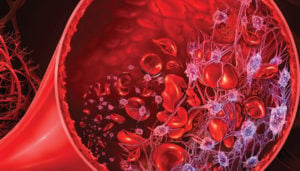Atypical Hemolytic Uremic Syndrome
What is Atypical hemolytic uremic syndrome (aHUS)? Atypical hemolytic uremic syndrome (aHUS) is an extremely rare and life-threatening disease featuring: Low levels of circulating red blood cells (RBCs) due to their destruction (hemolytic anemia), Low platelet count (thrombocytopenia) due to their consumption, and The inability of the kidneys to process waste products from the blood and […] Read More
Top Doctors For Atypical Hemolytic Uremic Syndrome Treatments
Top Hospitals For Atypical Hemolytic Uremic Syndrome Treatments
Atypical Hemolytic Uremic Syndrome
What is Atypical hemolytic uremic syndrome (aHUS)?
Atypical hemolytic uremic syndrome (aHUS) is an extremely rare and life-threatening disease featuring:-
-
- Low levels of circulating red blood cells (RBCs) due to their destruction (hemolytic anemia),
- Low platelet count (thrombocytopenia) due to their consumption, and
- The inability of the kidneys to process waste products from the blood and excrete them into the urine (acute kidney failure) is a condition known as uremia.
-
 Picture Courtesy: heart of Acadiana
Picture Courtesy: heart of Acadiana
What are the most common complications of Atypical hemolytic uremic syndrome?
Atypical hemolytic uremic syndrome (aHUS) causes serious complications. It causes the body to develop too many blood clots, making the blood flow too slowly to important organs. This can result in:-
-
- High blood pressure.
- Kidney damage or failure.
- Heart disease or cardiac attack.
- Damage to other organs of the body.
-
What are the most common risk factors of Atypical Hemolytic Uremic Syndrome?
The concurrences of multiple risk factors influence the onset of aHUS. The pathogenesis of aHUS is affected by several risk factors (genetic and environmental). The risk factors include:-
-
- Pregnancy.
- Certain medications like anticancer drugs.
- Chronic diseases like Malignant hypertension, Systemic sclerosis.
- Viral or bacterial infections, like Influenza, Chickenpox, and Urinary tract infections.
- Cancers or tumors, such as Spinal cord tumors, Carcinoma.
- Organ transplantation, such as Renal transplants, Bone marrow transplants.
- Genes that code for proteins and aid in controlling the complement system. This complement system forms a part of the immune system.
-
-
-
- CFH, CFHR1, CFHR3, CFHR4.
-
-
-
- C3, CD46 (MCP), CFB, DGKE, THBD.
-
What are the diagnostic steps for atypical hemolytic uremic syndrome diagnosis?
Currently, no laboratory test can efficiently confirm aHUS. Diagnosing the syndrome is complicated because it is more difficult to establish without a family history of the disorder. There is a push towards evaluating whether or not there are other markers of deregulation of clinical tests to help diagnose and manage these patients. The diagnostic criteria associated with aHUS are low platelet count, hemolytic anemia, and kidney dysfunction. aHUS should be suggestive in any patient presenting with thrombotic microangiopathy (TMA), particularly if the preceding history does not suggest STEC infection. The clinical features may suggest a diagnosis of aHUS but, when done, are insufficient in diagnosing aHUS. One should seek proof of STEC infection and exclude reduced ADAMTS13 activity. A measure of serum levels of C3, C4, factor H, and factor 1 is necessary before starting plasma exchange. Low C3 concentration suggests but does not prove aHUS. Genetic screening and testing for autoantibodies need to be performed on all suspected cases. Although it is important to clarify the cause of aHUS, these tests take time and do not form part of the initial diagnostic basis.Treatment Procedures for Atypical hemolytic uremic syndrome
Currently, the administration of eculizumab, an anti-C5 humanized monoclonal antibody, is the treatment standard for atypical hemolytic uremic syndrome. It inhibits the terminal complement activity. Eculizumab joins C5 and prevents its cleavage, thereby inhibiting MAC’s function (C5b, C6, C7, and C8). It has high efficacy in avoiding complement-mediated cell injury in TMA. Nowadays, eculizumab has become the first-line therapy in children with aHUS and adults after excluding other causes of TMA. This atypical hemolytic uremic syndrome treatment guideline is more effective than the earlier onset of treatment after diagnosis. The early treatment initiation results in better outcomes and greater improvements in eGFR (estimated glomerular filtration rate). Treatment with eculizumab is equally effective for all genetic variants and patients without identified variants.Eculizumab Administration
There is administration of a single dose of 900mg per week for 4 weeks, followed by a 1200mg maintenance dose twice weekly. Eculizumab therapy’s optimal duration in aHUS is not yet fully determined. The dosage of eculizumab is:-
-
- Weight-based for patients aged 18 or below.
- A fixed-dose for adults weighing more than 40kg.
-
What is the prognosis and life expectancy of patients with aHUS?
AHUS was associated with a poor prognosis when plasma infusion or exchange was the mainstay of management. For atypical hemolytic uremic syndrome life expectancy, 36% of children and 64% of adults developed end-stage renal disease or died within 3─5 years of disease onset. Although there has been a recent reduction in mortality rate, in more than half of all patients, aHUS progress to kidney failure often within three years of diagnosis. The death rates among aHUS patients are up to 25%. There is a poor quality of life for patients with aHUS patients, but the approval of eculizumab (Soliris) has greatly improved the prognosis for aHUS patients.Symptoms
What are the most common symptoms associated with aHUS?
Every individual with aHUS may show different signs, but the general symptoms include:
-
-
- Acute kidney injury.
- Abnormal lactate dehydrogenase level.
- Hematuria (blood in the urine).
- Micro-angiopathic hemolytic anemia.
- Proteinuria (high protein levels in the urine).
- Thrombocytopenia (low platelet count).
- Decreased level of thrombomodulin.
- Decreased serum complement factor B.
- Decreased serum complement factor 1.
- Anuria (absent urine output).
- Autosomal-dominant inheritance.
- Autosomal-recessive inheritance.
- Cognitive impairment.
- Coma.
- Decreased serum complement factor H.
- Decreased serum-complement C3.
- Diarrhea (watery excreta).
- Dysphasia.
- Elevated serum creatinine.
- Fever (rise in body heat).
- Hemiparesis (weakness in one side of the body).
- Hemolytic uremic syndrome.
- Hyperlipidemia (elevated lipids in the blood).
- Hypertension.
- Increased blood urea nitrogen.
- Purpura (red or purple spots on the skin).
- Reticulocytosis (increased number of immature red blood cells).
- Schistocytosis.
- Seizures.
-
Causes
What are the Causes for aHUS?
The life-threatening diseases are caused by abnormal blood clots formed in small blood vessels in the kidneys. These clots restrict or block blood flow, with resultant medical complications: hemolytic anemia, thrombocytopenia, and kidney failure.
Atypical hemolytic uremic syndrome (aHUS) is not age-specific. It is often caused by a combination of factors, which include environmental and genetic factors.
1. Genetic Factors.
This involves genes that code for proteins. They help control the complement system, part of the body’s immune system.
Gene mutation may be identified in about 60% of aHUS. The genes linked with genetic atypical hemolytic uremic syndrome aHUS include:
-
-
- C3, CD46 (MCP), CPB, CFH, CFHR1, CFHR3, CFHR4, CF1, DGKE, THBD.
-
Their mutations increase the likeliness of developing aHUS but do not cause the disease directly. In a family, aHUS is inherited in an autosomal dominant or an autosomal recessive inheritance pattern.
2. Environmental Factors.
These include certain medications, chronic diseases, viral or bacterial infections, cancers, organ transplantation, and pregnancy. Medications such as anticancer drugs and chronic diseases like systematic sclerosis and malignant hypertension are associated with aHUS.
FAQ
How rare is atypical hemolytic uremic syndrome aHUS?
In the US, Atypical HUS occurs in 1:500,000 people annually. The typical form is about 10 times more common than the atypical form.
Is atypical HUS curable?
Atypical HUS has no cure. The only medication used to manage it is eculizumab (a humanized monoclonal antibody).
Is atypical HUS hereditary?
Most atypical HUS cases are hereditary. A few might be caused by auto-antibodies and may become chronic as individuals experience repeated episodes.
How do you treat atypical HUS?
Eculizumab is the only medication for aHUS. It improves the counts of platelets and red blood cells and may also reverse kidney injuries and failure if taken promptly.
How do you get atypical hemolytic uremic syndrome?
Atypical HUS is hereditary and non-hereditary. It does not vary by age, race, and geographical location. 60% of this syndrome is associated with gene mutation.










































